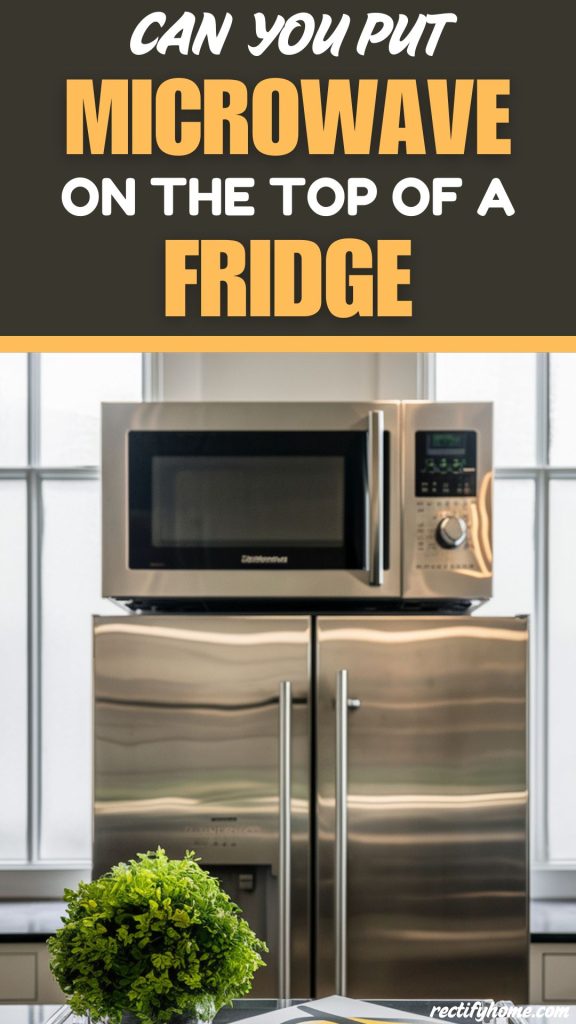
Finding ways to save space in a kitchen can be a challenge, especially for those with smaller areas. One common question that arises is: can you put a microwave on top of a fridge? This article explores the safety, weight limits, and organization strategies for placing a microwave on top of a refrigerator. By understanding these factors, you can make informed decisions that enhance your kitchen’s functionality.
Safety and Placement
Is it safe to place a microwave on top of a refrigerator?
Microwaves emit heat and require proper ventilation, and placing one on top of a refrigerator can pose risks. If you decide to go ahead, ensure that the microwave is stable and doesn’t obstruct any vents on the fridge. Additionally, check the height to ensure it’s easy to use without straining.
It’s important to check the manufacturer’s guidelines for both the microwave and the refrigerator. Many appliances come with specific recommendations for placement that should be followed. If your microwave is too heavy or large, it could affect the refrigerator’s structure over time, leading to potential issues.
Where should I ideally position my microwave for safety and convenience?
The ideal position for your microwave balances safety and convenience. Placing it at counter height makes it easy to access, minimizing the risk of spills or burns. If you’re thinking about putting a microwave on top of a fridge, consider a microwave shelf instead. These shelves are designed to hold the weight safely and provide an easier access point.
Another option is to have the microwave built into cabinetry at a lower height. This setup can help keep the kitchen looking neat and organized while ensuring that you can easily reach the microwave without any strain.
Microwave on Top of Fridge Ideas
To inspire your kitchen organization, here are five creative ideas for placing a microwave on top of a fridge:
Modern Minimalist Look: A sleek, stainless steel microwave on a clear acrylic tray, paired with a small plant and a cookbook for a clean, contemporary vibe.
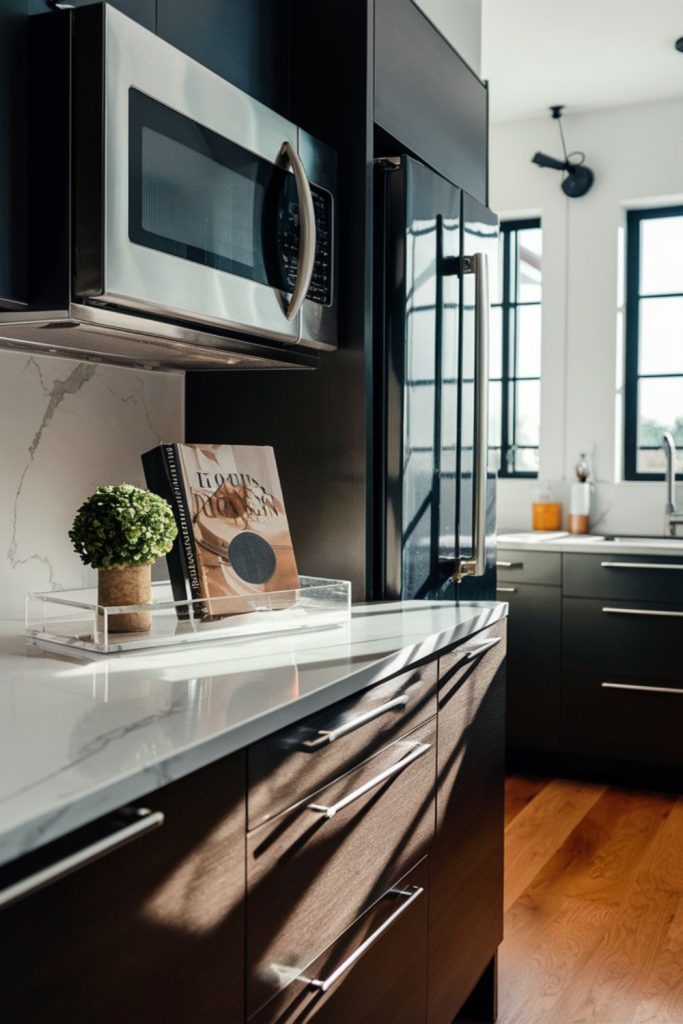
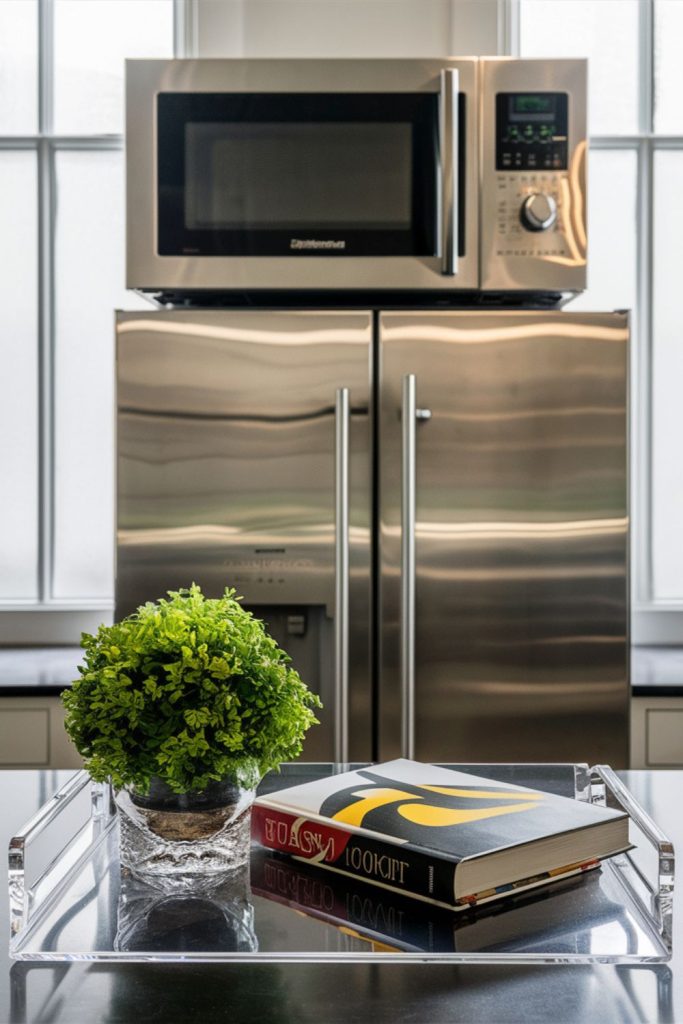
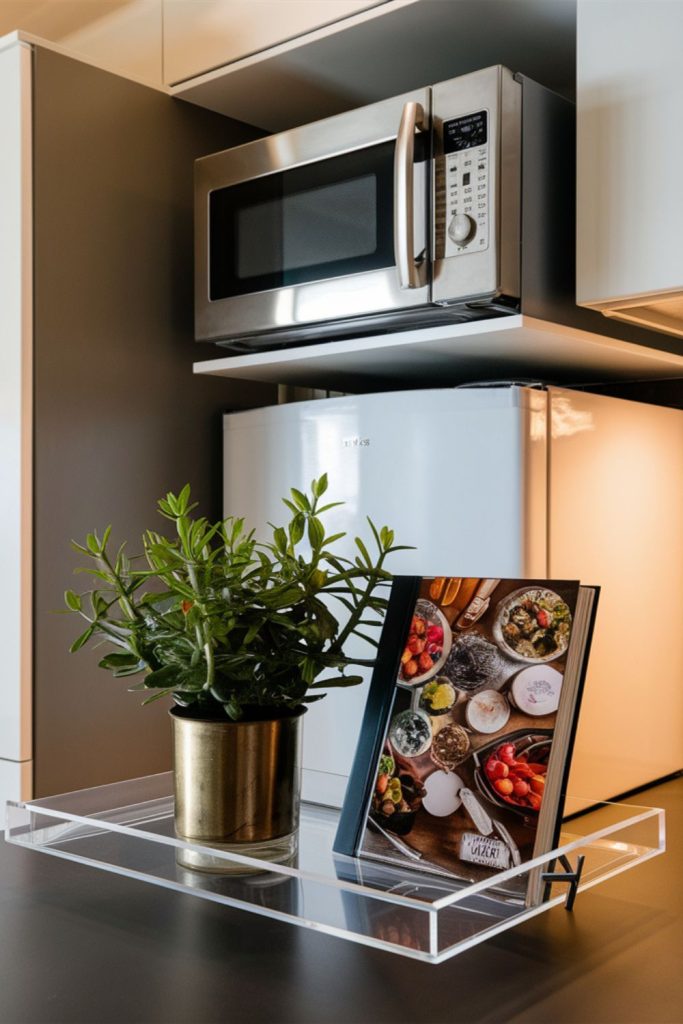
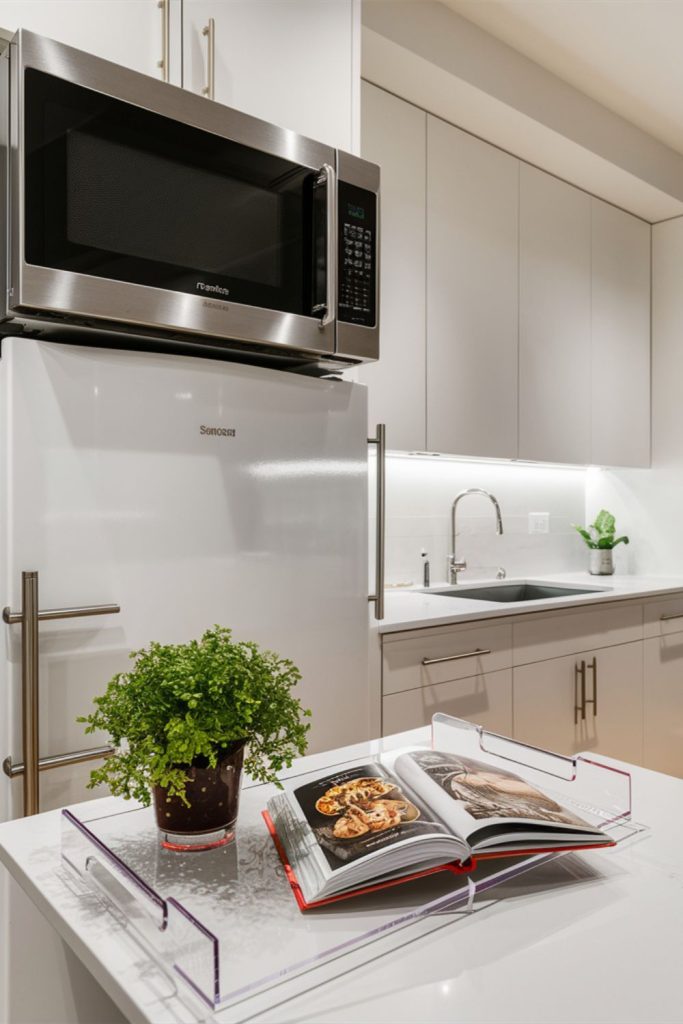
Rustic Charm: A vintage-style microwave on a wooden cutting board, surrounded by mason jars filled with utensils and a small herb pot, creating a cozy, farmhouse feel.
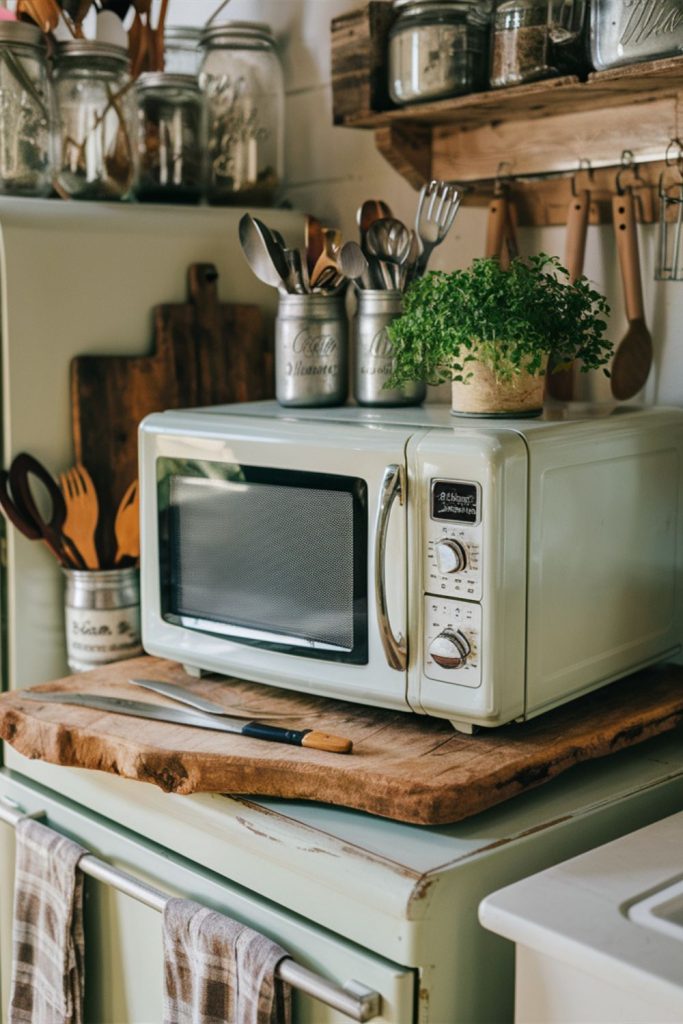
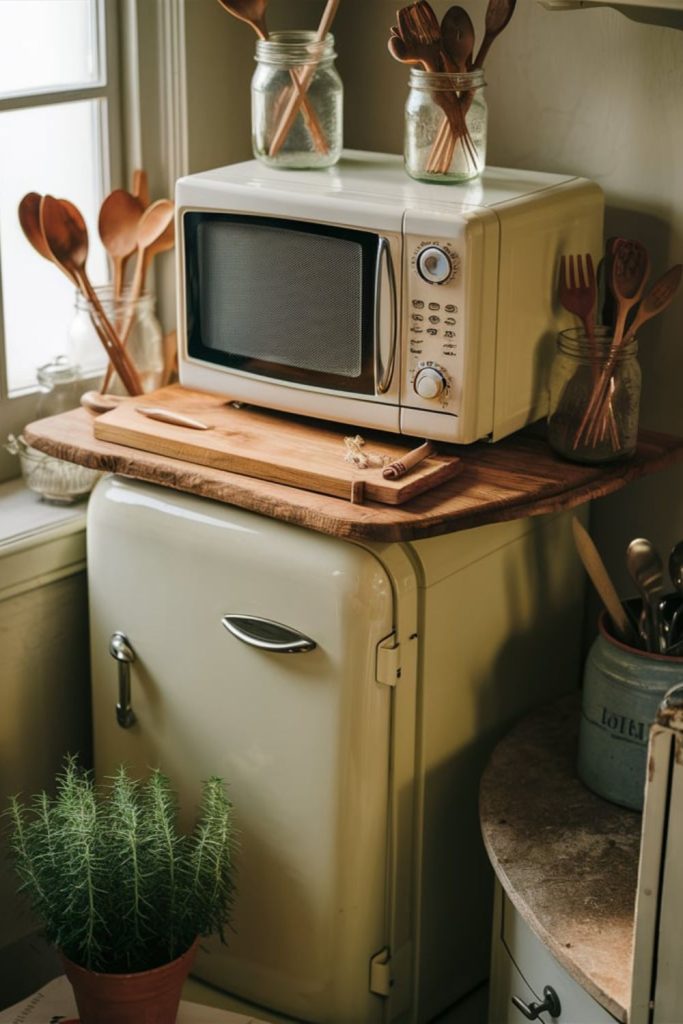
Color Pop: A brightly colored microwave, like red or turquoise, on a black fridge, complemented by matching storage containers for a fun, vibrant kitchen design.
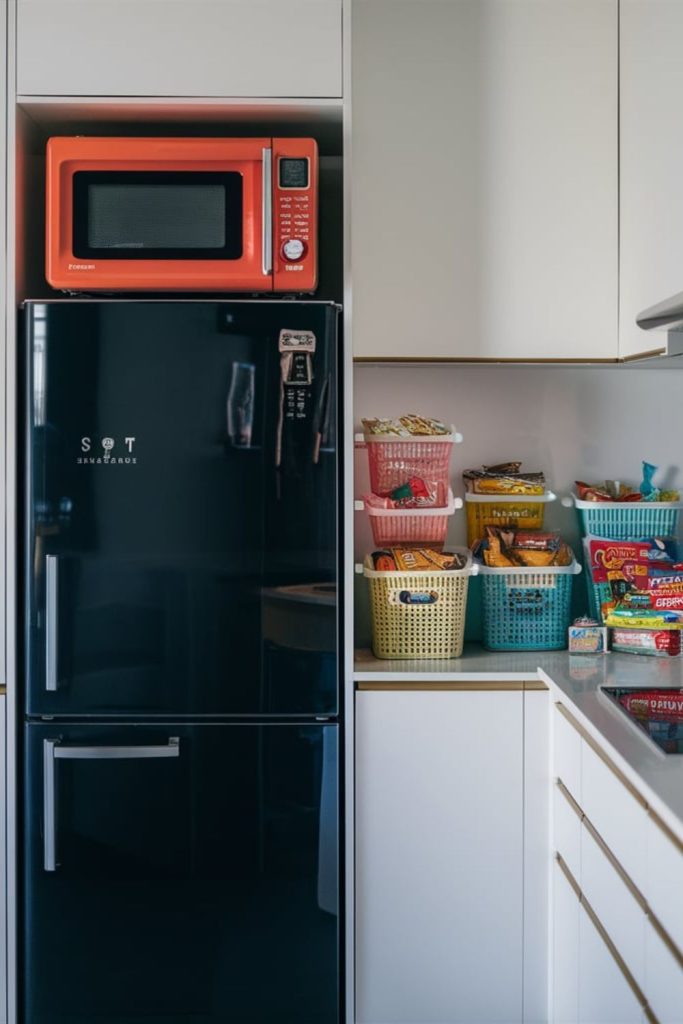
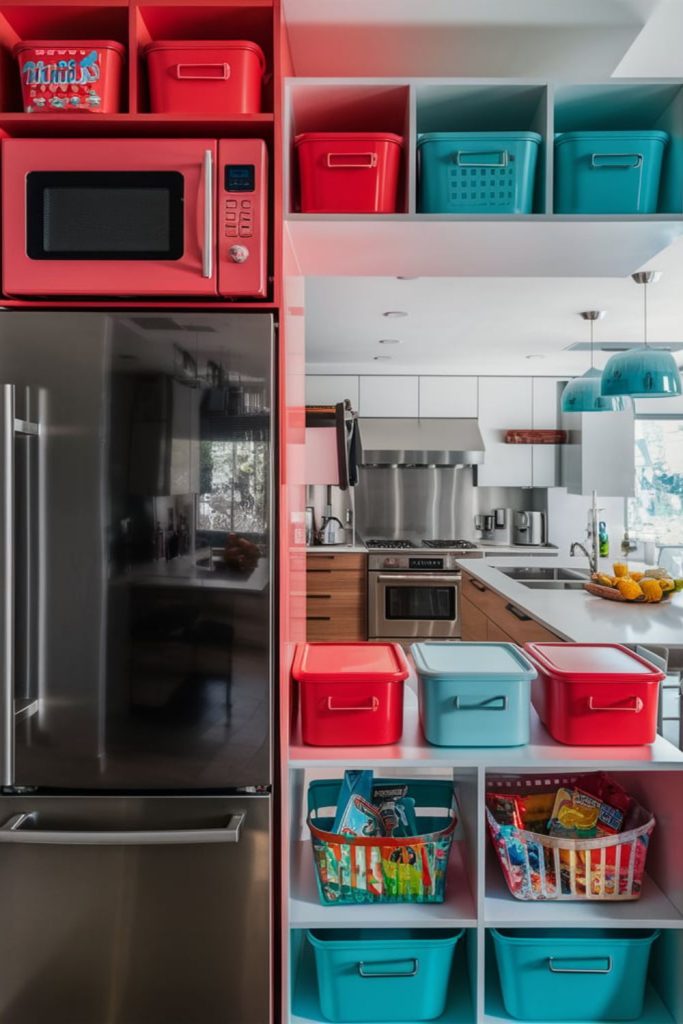
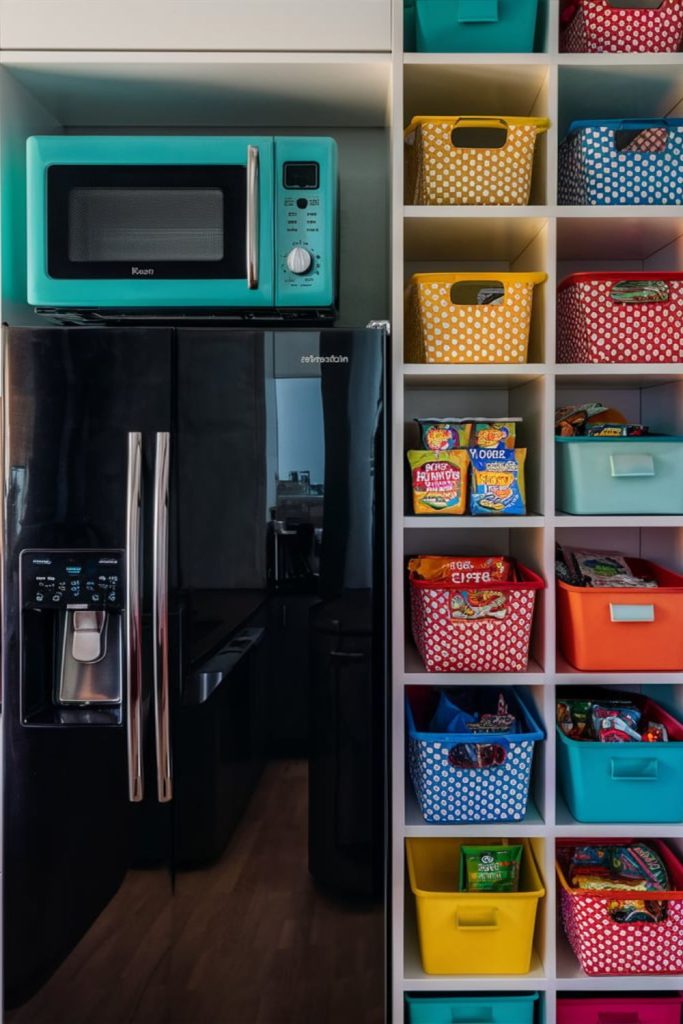
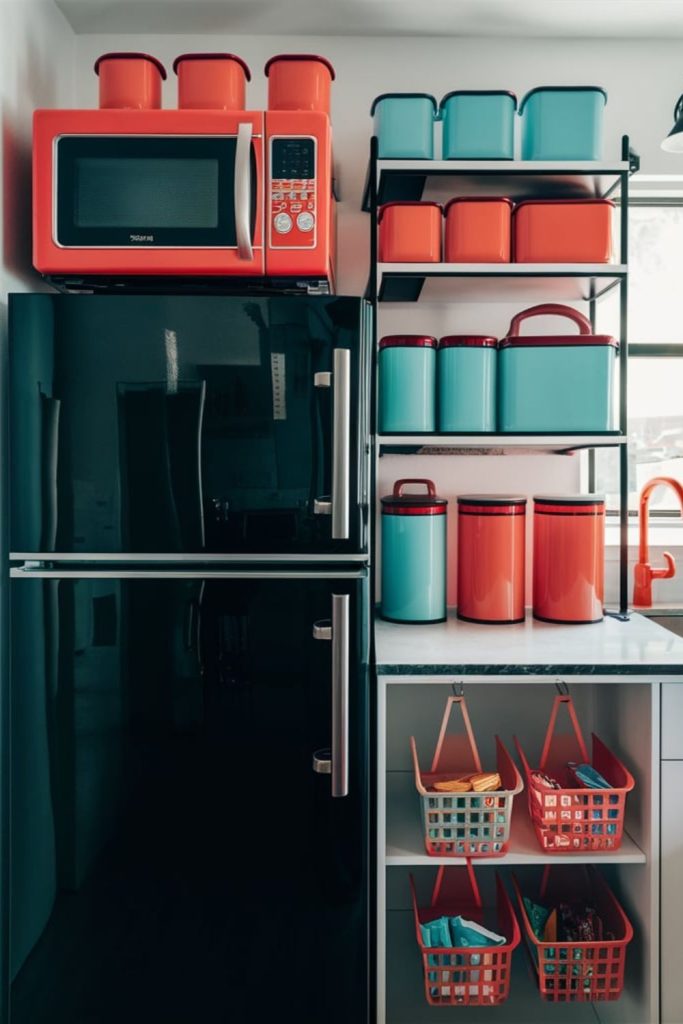
Integrated Appliance Center: A small microwave on a dedicated shelf above the fridge, along with a coffee maker and toaster, showcasing an organized appliance hub.
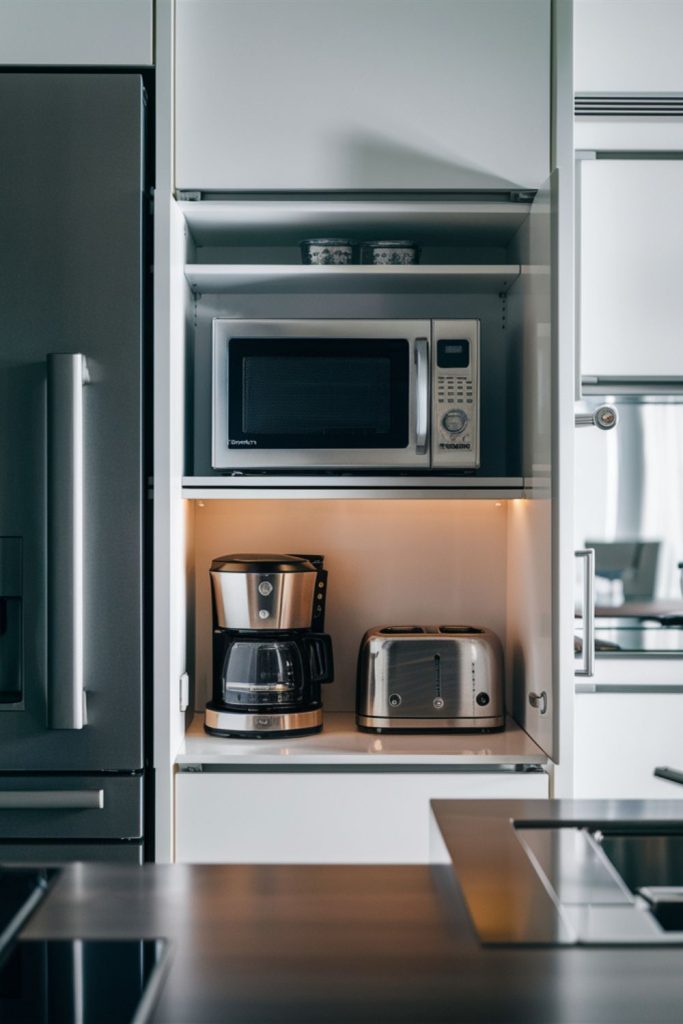
Smart Storage Solution: A tiered shelf or cart beside the fridge with the microwave on top, featuring storage bins on lower tiers for a stylish and efficient use of space.
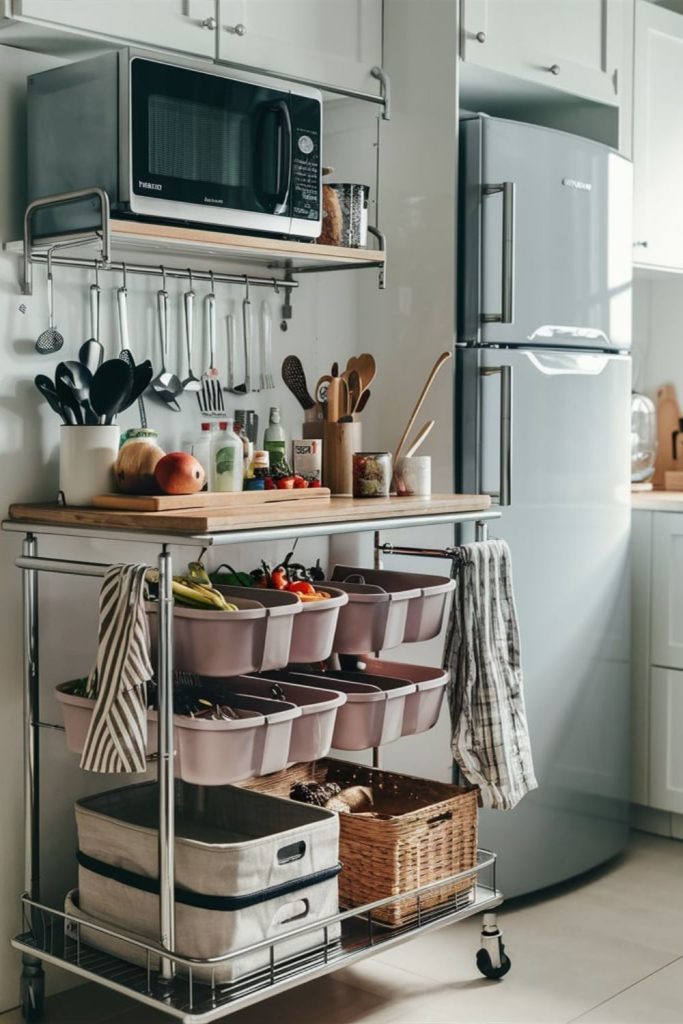
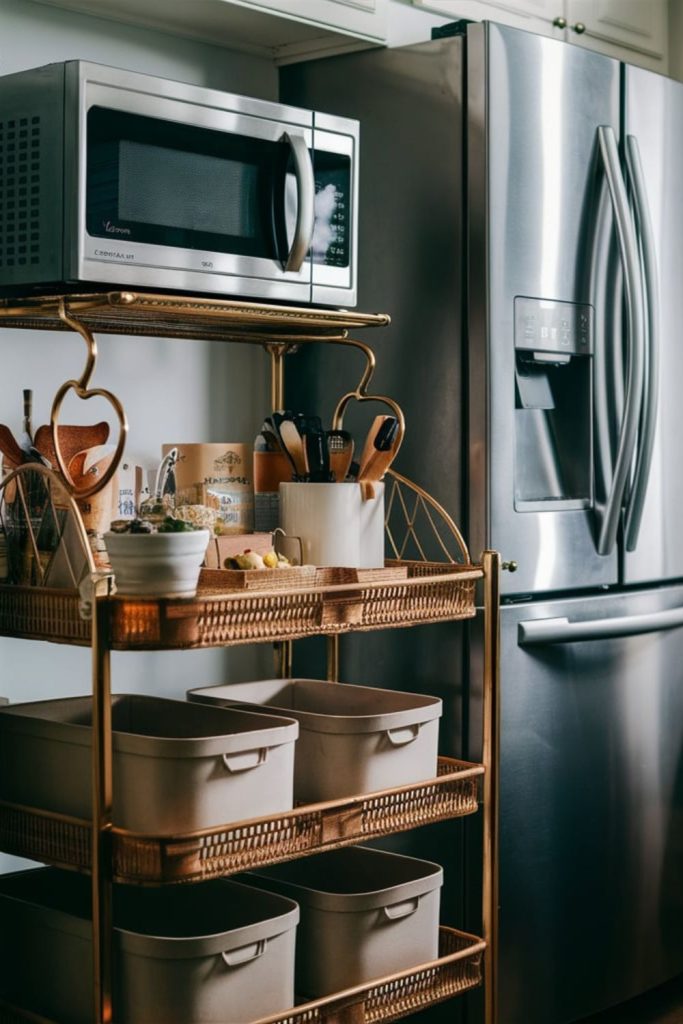
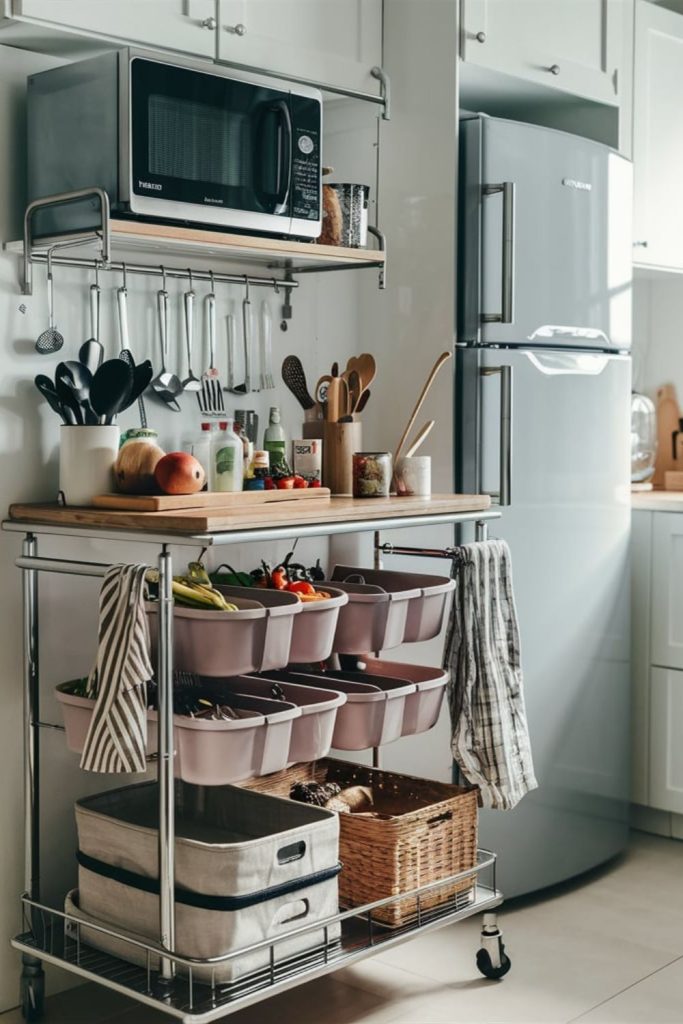
Where should I avoid placing a microwave in the kitchen?
There are certain spots in your kitchen where placing a microwave is not advisable. Avoid placing it near the stove or oven, as the heat can damage the microwave’s components. Areas with heavy traffic can also be problematic; if the microwave is in a busy spot, it may be knocked over or bumped, leading to accidents.
Also, avoid locations that may restrict airflow, such as cramped corners or enclosed cabinets. Microwaves need ventilation to function correctly, and placing one in a tight space can lead to overheating and damage.
Weight and Structural Considerations
How much weight can a refrigerator safely hold on top?
Most refrigerators are designed to hold a certain amount of weight on top, but this varies by model. Generally, placing items weighing around 50 pounds or less is advisable, but you should check the specifications for your particular fridge in the user manual.
Overloading the top of your refrigerator can lead to damage. It may also affect the fridge’s stability, leading to issues over time. To ensure the microwave doesn’t exceed weight limits, consider its size and materials.
What are the risks of placing heavy items on top of a fridge?
Placing heavy items on top of a refrigerator can lead to several risks. For one, it could cause the fridge to become unbalanced. This imbalance can affect how well the fridge maintains temperature, which could lead to food spoilage. Heavy items can also damage the refrigerator’s surface or cause scratches.
Another concern is the risk of falling items. If the microwave or any other heavy object slips, it could injure someone standing nearby. Always be cautious and assess what you plan to place on top of the fridge to ensure safety for everyone in the kitchen.
Electrical and Ventilation Concerns
Can a microwave and refrigerator be on the same electrical circuit?
Microwaves consume a lot of power, and sharing a circuit with a refrigerator could lead to tripped breakers or other electrical issues.
For optimal performance, it’s wise to have the microwave on a dedicated circuit. This way, both appliances can operate without any risk of overloading the circuit. Consulting an electrician can provide clarity on your home’s electrical setup.
Does a microwave require proper ventilation when placed on top of a fridge?
Yes, a microwave requires adequate ventilation to function safely and efficiently. If you place a microwave on top of a refrigerator, ensure that there’s enough space around it for airflow. Blocking the vents can cause the microwave to overheat, leading to malfunctions or even fires.
Proper ventilation helps maintain the microwave’s performance and prolongs its lifespan. Ensure airflow on all sides and avoid covering any vents.
Kitchen Organization
What items are suitable for storage on top of a refrigerator?
Light items like cookbooks, decorative pieces, or small kitchen gadgets can work well without adding too much weight. Just make sure they are not at risk of falling.
It’s best to avoid storing food items on top of the fridge, as these can attract pests or spoil quickly. Focus on items that are not needed daily but can still be handy, such as seasonal decorations or rarely used appliances.
How can I effectively organize kitchen appliances to maximize space?
Start by assessing your current layout. Look for underutilized areas, such as above cabinets or on shelves. You can use stackable storage bins or tiered shelves to create additional space.
Consider investing in multi-functional furniture, like a kitchen island with storage. This allows you to keep everything organized while providing extra counter space. Keep frequently used items accessible and store less-used items in harder-to-reach areas.
Proximity and Interaction
How close can a microwave be to a refrigerator and an oven without safety concerns?
A microwave should ideally be placed at least a few inches away from both the refrigerator and the oven. This distance helps prevent heat damage and allows for proper airflow around all appliances.
Too close to the oven can expose the microwave to excess heat, while being too near the refrigerator may restrict airflow. Keeping a safe distance ensures that each appliance can operate effectively without affecting the others.
Conclusion
In summary, placing a microwave on top of a fridge can save space if done correctly. Prioritize safety by ensuring the microwave is stable, well-ventilated, and not exceeding weight limits. Follow manufacturer guidelines and keep your kitchen organized for the best results. With careful planning, you can create a functional and safe kitchen environment that meets your needs.
